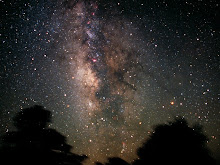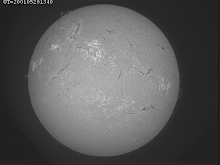America has a somewhat more savage environment than does Europe and it arises from geophysical and meteorological causes. This continent is exposed to the Sun in a different way than is the Eurasian land mass. America is exposed almost at one time each day. When the Sun rises in Boston, the sky is becoming lighter in Seattle as the first dawn twilight begins. Roughly speaking, the Sun rises and sets over the whole United States at one time. For the United States, seacoast storms are fueled on both East and West coast at least eight hours a day. Meteorology on the American continent has weather from both the Pacific and Atlantic at the same time.
East Coast weather patterns in North America sometimes stretch all the way to the West Coast. In the Americas, as everywhere, volcanoes exist, but in the Americas they engage the solar environment and space itself. Weather in the United States is not tame; it has something of the jagged character of asteroids and moons, that increase greatly the contrast between volcanoes and river valleys. In North America, the Mountains cleave Longitude, and the Earth's character seems less sheltered from meteors. Nothing in America cares how much space comes to Earth to meet the stones and volcanoes.
In a distinctly different pattern, when the Sun rises in Tokyo at the distant Eastern end of the Eurasian land mass, it is just setting in London where the whole night is yet to pass before dawn's twilight begins. By the time the Sun rises in Warsaw, any weather brought by that object has come across eight thousand miles of land, and no sharks. Europe gets a rest from solar-driven weather originating at the Eastern discontinuity of Asia with the Western Pacific. West-Pac weather never reaches Europe. Land tames the wind in the Eurasian continent. Meteorology becomes stabilized by geology, and theology's spiritual religions become embedded in the Earth with the planting of crops, the harvesting of food, and the burial of the dead. Much of Asia never worries about meteors falling from the sky; instead the Himalayas seem to be where Earth's stone reaches for that sphere instead.
The geopolitics and spirituality are very different in the Americas, than they are in the Eurasian land mass. That is why large houses in the America's were not extensively successful until the resolution of forces in mechanics provided architectural design with nearly wind-proof design standards. In Europe before the new designs, human beings sometimes lived for generations in houses that within a few years would invariably have been weathered to unusable in the Americas. America has a fiercer dynamical relationship in the relation between weather and geology than does the Old World's Eurasian continent.
Why is this important? Because houses are important everywhere in the world. In Europe, nothing exists like the tornado season in the mid-West of America. Weather is at cross purposes with geology in America; the interplay between the two seems to have only the most ferocious purposes in its mindless violence. What does it matter if it is purpose or not? If there are animals named for purpose in the ocean, something on land can be thought of as having purpose-yet perhaps it is not an animal. Perhaps on the American continent, the inanimate dynamical land's complex and violent, inevitable, even implacable succession should be thought of has having, even so, some bewildering purpose. Just as dolphins leave us wondering what purpose really is, so does the complex interplay of meteorological spirituality and geological establishment leave us sometimes bewildered, sometimes astonished, and always surprised.
In China, ancient in that vast land, Feng Shui appeared because it was possible to make sense of the way in which the long term consistency of weather patterns made possible sensible design of the house. This consistency appears to exist all across the Eurasian land, to Greece and Scotland. In America, one is lucky to engage anything of the wind safely, and it must be viewed with caution in relation to the very existence of the house. Weather in America threatens houses constantly, where in some parts a person is lucky just to have a house that allows breath, warmth, sunlight, safety and moderate humidity at the same time.
Weather in America inevitably and implacably comes into contradiction with European style houses. Not that European style houses can't succeed, even thrive here. American style housing architecture is only beginning to appear distinct from European style housing, in both their extensive variety, on the basis of geological and meteorological dynamics. That distinction is welcome, and will be a valuable source of innovation in the future as it expertise increases. Already, several international organizations exist that take a global view of these kinds of regional variations into account.
Subscribe to:
Post Comments (Atom)







No comments:
Post a Comment